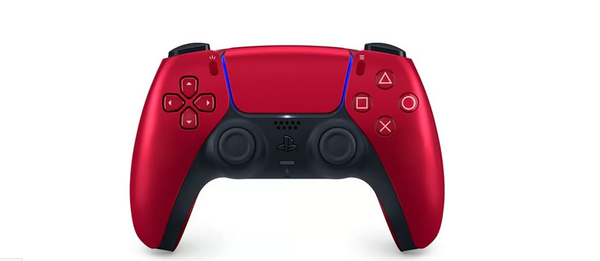Notifications
ALL BUSINESS
COMIDA
DIRECTORIES
ENTERTAINMENT
FINER THINGS
HEALTH
MARKETPLACE
MEMBER's ONLY
MONEY MATTER$
MOTIVATIONAL
NEWS & WEATHER
TECHNOLOGIA
TV NETWORKS
VIDEOS
VOTE USA 2026/2028
INVESTOR RELATIONS
DEV FOR 2025 / 2026
ALL BUSINESS
COMIDA
DIRECTORIES
ENTERTAINMENT
FINER THINGS
HEALTH
MARKETPLACE
MEMBER's ONLY
MONEY MATTER$
MOTIVATIONAL
NEWS & WEATHER
TECHNOLOGIA
TV NETWORKS
VIDEOS
VOTE USA 2026/2028
INVESTOR RELATIONS
DEV FOR 2025 / 2026
About Me
 Nicky Berg
Nicky Berg I am a professional writer with more than 10 years of experience. I specialize in creating compelling and engaging content for a variety of industries, including lifestyle, travel, health and wellness, and business. I am passionate about telling stories that connect with audiences, and I strive to create content that is unique, informative, and interesting.
 Nicky Berg -
Jan 22 -
Sports -
playstation
ps5
PlayStation5
ps5 controller
-
229 views -
0 Comments -
0 Likes -
0 Reviews
Nicky Berg -
Jan 22 -
Sports -
playstation
ps5
PlayStation5
ps5 controller
-
229 views -
0 Comments -
0 Likes -
0 Reviews

For decades, the standard video game controller has been a reliable, albeit somewhat static, interface. We've grown accustomed to the familiar click of buttons, the firm grip of analog sticks, and the general sense of detachment that comes with holding a hunk of plastic. Then came the PlayStation 5 and its revolutionary DualSense controller – a device that isn't just about input; it's about output, feeling, and connection. The DualSense isn't merely an evolution in controller design; it's a paradigm shift, fundamentally changing how we experience the worlds within our games.
This isn't hyperbole. The DualSense’s innovations, primarily its haptic feedback and adaptive triggers, go far beyond mere rumble and resistance. They transform the act of playing a game into a multi-sensory experience, drawing the player deeper into the narrative and the mechanics with an unprecedented level of nuance. Let's delve into the specifics of how the DualSense achieves this, exploring the features that have earned it such widespread acclaim.
Traditional PS5 controller use simple rumble motors to simulate vibrations – a coarse, often vague sensation that generally indicates action happening on screen. The DualSense controlle, however, takes this concept and refines it to an astonishing degree. Its haptic feedback system leverages a series of intricate actuators capable of delivering a remarkably broad range of tactile sensations.
Imagine running across a sandy beach in a game. With a traditional controller, you'd likely feel a generic rumble. With the DualSense, you might feel the subtle give under each footstep, the slight resistance of the sand, and the gentle rustling as the grains shift around you. Now, picture drawing back a bowstring; instead of just feeling a vibration, you feel the increasing tension as the string pulls taut, the distinct “snap” as the arrow releases, and perhaps even a subtle tremor as the force travels through the weapon.
This level of fidelity allows developers to craft incredibly nuanced feedback, mirroring the subtle details that create believability. Walking on different surfaces, colliding with objects, the recoil of firearms, the rumble of an engine – all of these sensations become incredibly tactile and immersive. The DualSense doesn't just tell you that something is happening; it makes you feel it. This subtle but pervasive sensation enhances the connection between the player and their avatar, blurring the line between the game world and reality.
The benefits extend beyond just the experience itself. By providing detailed tactile information, the DualSense can also enhance gameplay. For example, in Returnal, the subtle feedback through the trigger helps players identify when their weapon's alt-fire is ready and how much charge it has. Games such as the Astro's Playroom, a pack-in title that served as a showcase for the PlayStation controller, highlighted the potential of haptic feedback by letting players feel the satisfying click of a zipper or the gentle patter of rain on a surface – experiences that could be easily overlooked in a traditional controller-gameplay loop. This level of interactive detail adds another layer to the immersion.
While haptic feedback delivers nuanced sensations to the palm of your hand, adaptive triggers offer a dynamic level of force feedback through the R2 and L2 buttons. These aren't just simple triggers; they can provide varying levels of resistance and precision, allowing the player to feel the action they’re performing.
Imagine firing a bow and arrow. Instead of a simple button press, the adaptive triggers offer resistance as you draw back the string, forcing you to use a deliberate and controlled motion. As the string pulls taut, you'll actually feel the tension, building a sense of weight and power that's absent with a traditional controller. Similarly, when driving a car, the triggers become an extension of the accelerator and brake pedals. You'll feel the resistance as you apply the brakes, the slight give as you accelerate, and the vibrations of the engine.
This added layer of resistance isn't just a gimmick; it fundamentally alters the mechanics of gameplay. Actions that used to be simple button presses become deliberate and nuanced, enhancing the player’s connection to their in-game actions. Pulling a trigger in a tense firefight no longer feels like a binary process; you feel the weight of the weapon itself, the feedback of the mechanism, and the very act of firing. This makes every action feel more impactful and weighty, deepening the sense of immersion.
The adaptive triggers also play a big role in the world-building of the game itself. In the recent God of War: Ragnarok, the feeling of pulling back the Leviathan Axe before a throw or using a shield to block a devastating impact comes to life through the resistance in the adaptive triggers. This level of tactile immersion isn't just about gameplay; it's about heightening the player's sense of presence within the game.
While haptic feedback and adaptive triggers are the DualSense's headline features, they’re not the only elements that contribute to its elevated gaming experience. The integrated microphone array, for example, allows for voice input and communication, freeing up headsets for another layer of immersion. The built-in speaker adds yet another layer of sensory input, providing localized sounds that enhance spatial awareness and draw the player further into the game’s world.
Even the subtle design refinements contribute to the overall experience. The ergonomic shape makes the DualSense a comfortable companion for even the lengthiest gaming sessions. The improved analog sticks offer greater precision, while the integrated light bar provides visual feedback, mirroring in-game events and enhancing the overall aesthetic. The light bar is not just decorative; it can be used to indicate a player’s health or change color to reflect the game’s atmosphere.
The DualSense controller isn't just a piece of hardware; it's a creative catalyst. Developers are now actively building games with the DualSense's features in mind, crafting experiences that are specifically designed to leverage its capabilities. Games like Gran Turismo 7 utilize the adaptive triggers to simulate the feel of different brake systems and throttle responses, with Deathloop featuring subtle trigger feedback for weapons jams, and the adaptive triggers in Ghost of Tsushima Directors Cut making each draw of the bow feel different creating a more in-depth and realistic gameplay experience.
This focus on haptics and adaptive feedback isn't just about adding bells and whistles – it's about creating a new level of engagement. The DualSense invites developers to rethink the way they create game worlds and interactions, leading to experiences that are more tactile, more visceral, and ultimately more immersive. It allows storytellers to convey information and emotions in ways that were previously impossible, creating richer narratives and more compelling characters.
The DualSense controller is more than just a peripheral; it's a conduit to the game world. By blurring the line between the virtual and the real, it elevates immersion to an entirely new level of depth, engaging not just our eyes and ears, but our sense of touch as well. It's a testament to the power of innovation, showing just how much a controller can impact the overall gameplay experience.
Of course, the integration of these features isn’t always perfect. There are moments when the haptic feedback may not be as precise or detailed as the player expects, or when the adaptive triggers might feel a bit too resistant or unyielding. These aren’t criticisms of the technology but rather a reminder that it is an evolving art. As developers grow more adept at using the new technology, the integration of its features will only get better, richer, and more impactful.
The legacy of the DualSense controller is likely to be that it set the standard for the future design of not just PlayStation controllers, but potentially the controllers of other consoles and PC gaming peripherals. It has demonstrated what's achievable when you don't just think about input, but also the output, allowing the controller to be a genuine extension of your senses.
The DualSense isn't just a piece of plastic in your hands; it's a bridge to another world. As you immerse yourself in the games of the PlayStation 5, you not simply playing; you're feeling, reacting, and connecting with the story in a way that’s more profound than ever before. This is the new generation of gaming, and the DualSense isn't just part of it – it's helping to define it. The future of gaming isn't just on the screen; it's in the palm of your hands.
